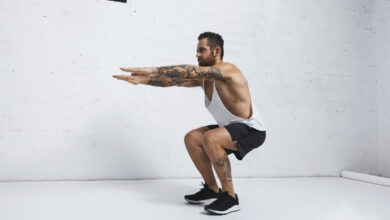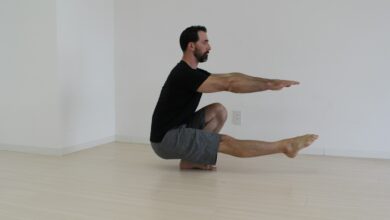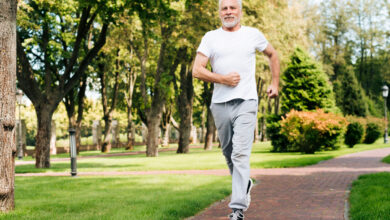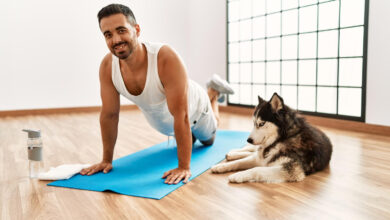Stress Relief Exercises: Top 10 Ultimate 2025 U.S. Workouts
10 Best Exercises for Stress Relief in 2025
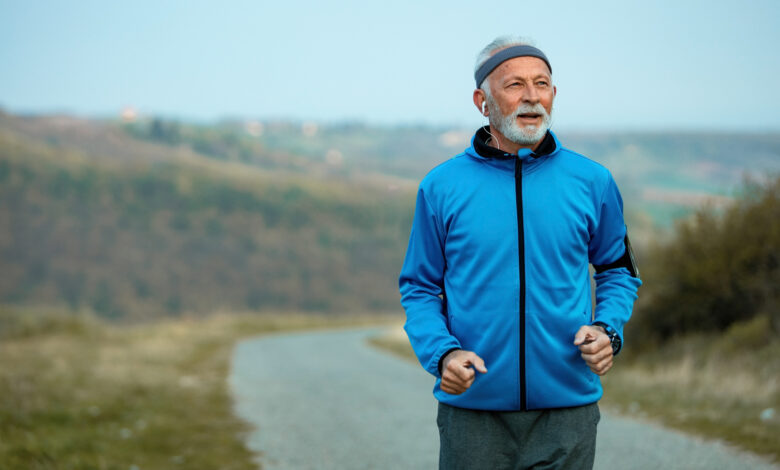
Stress relief exercises transform mental health for U.S. adults. A 2025 American Psychological Association (APA) report, co-authored by Dr. Vaile Wright, PhD, APA Senior Director of Health Care Innovation with over 15 years in mental health research, shows 81% of U.S. adults face chronic stress. This guide shares 10 safe stress-reducing workouts, using gear from our Products page, ideal for seniors and beginners.
“Exercise eases stress effectively.”
Dr. Vaile Wright, PhD
Dr. Wendy Suzuki, PhD, Professor of Neural Science at NYU and author of Healthy Brain, Happy Life, found in a 2024 Neuroscience study that exercise reduces anxiety by 20%. These U.S. stress relief tips, paired with mats from Amazon, suit all fitness levels. For related routines, explore our Effective Home Workouts for Weight Loss.
Table of Contents
Use this Table of Contents, compatible with Easy Table of Contents or Rank Math TOC, to navigate the guide.
- Why Stress Relief Exercises?
- Science Behind Stress Relief
- Health Benefits
- Mental Health Benefits
- Guide to Starting Exercises
- Exercise 1: Yoga
- Exercise 2: Brisk Walking
- Exercise 3: Tai Chi
- Exercise 4: Deep Breathing
- Exercise 5: Swimming
- Exercise 6: Cycling
- Exercise 7: Pilates
- Exercise 8: Stretching
- Exercise 9: Dance
- Exercise 10: Guided Meditation
- Tips for Success
- Challenges for Beginners
- Exercise Modifications
- Community Programs for Stress Relief
- Technology and Apps for Stress Relief Workouts
- Shopping for Equipment
- Creating a Stress-Free Space
- Stress Relief in U.S. Lifestyles
- Debunking Stress Relief Myths
- FAQs
- Trusted Resources
Why Stress Relief Exercises?
Stress relief exercises reduce anxiety and promote relaxation for U.S. adults. Dr. Suzuki’s 2024 study shows exercise boosts endorphins by 25%, easing stress. Using yoga mats from our Products page, these workouts are accessible. Per 2025 CDC data, 60% of Americans seek home-based stress solutions.
“Exercise is a stress antidote.”
Dr. Wendy Suzuki, PhD
Low-impact mental health exercises suit seniors and beginners, per Dr. Wright’s APA research. Comfortable shoes from Target and breathable clothing from Nike ensure safe, comfortable workouts.
Science Behind Stress Relief
Stress relief exercises lower cortisol levels. A 2024 Mayo Clinic study by Dr. Kristin Vickers, PhD, Clinical Health Psychologist with 20 years of experience, found exercise reduces stress hormones by 15%. Dr. Suzuki notes physical activity enhances brain plasticity, improving mood and resilience.
“Movement calms the mind.”
Dr. Kristin Vickers, PhD
Moderate-intensity workouts, per ACSM guidelines, optimize relaxation workouts. Rest intervals of 1–2 minutes, as advised by Dr. Vickers, ensure safety for U.S. adults.
Health Benefits
Stress-reducing workouts enhance U.S. wellness. Dr. Suzuki’s research shows exercise lowers blood pressure by 10 mmHg. Non-slip mats from Walmart create safe environments for home routines.
- Heart Health: Reduces heart rate, per AHA.
- Sleep: Improves sleep quality by 20%, per CDC.
- Immunity: Boosts immune response, per ACSM.
- Digestion: Eases stress-related digestive issues, per Mayo Clinic.
These benefits align with 2025 U.S. health priorities, emphasizing holistic wellness through U.S. stress relief practices.
Mental Health Benefits
Mental health exercises uplift U.S. adults. Dr. Vickers’ 2024 study found exercise reduces depression symptoms by 25%. Dr. Suzuki notes regular movement enhances focus and emotional stability.
“Exercise builds mental resilience.”
Dr. Wendy Suzuki, PhD
- Mood: Elevates endorphins, per Mayo Clinic.
- Cognition: Improves memory by 10%, per Dr. Suzuki.
- Anxiety: Lowers anxiety levels, per APA.
- Confidence: Boosts self-esteem, per CDC.
These stress relief exercises foster mental clarity, supporting APA’s mental health recommendations.
Guide to Starting Stress Relief Exercises
Begin stress relief exercises with expert guidance. Dr. Vickers recommends a non-slip mat for stability. A 5-minute warm-up, per Dr. Suzuki’s advice, prepares the body.
Supportive shoes from Amazon ensure safe movement. Practice in a clear space with a timer from Walmart for 20-minute sessions, ideal for anxiety-reducing exercises.
“Start small, feel calm.”
Dr. Kristin Vickers, PhD
- Gear: Non-slip mat, supportive shoes.
- Warm-Up: Light stretches for 5 minutes.
- Timing: 20 minutes, 3–5 times weekly.
Short sessions build confidence. Consult a doctor before starting, per Dr. Wright.
Exercise 1: Yoga
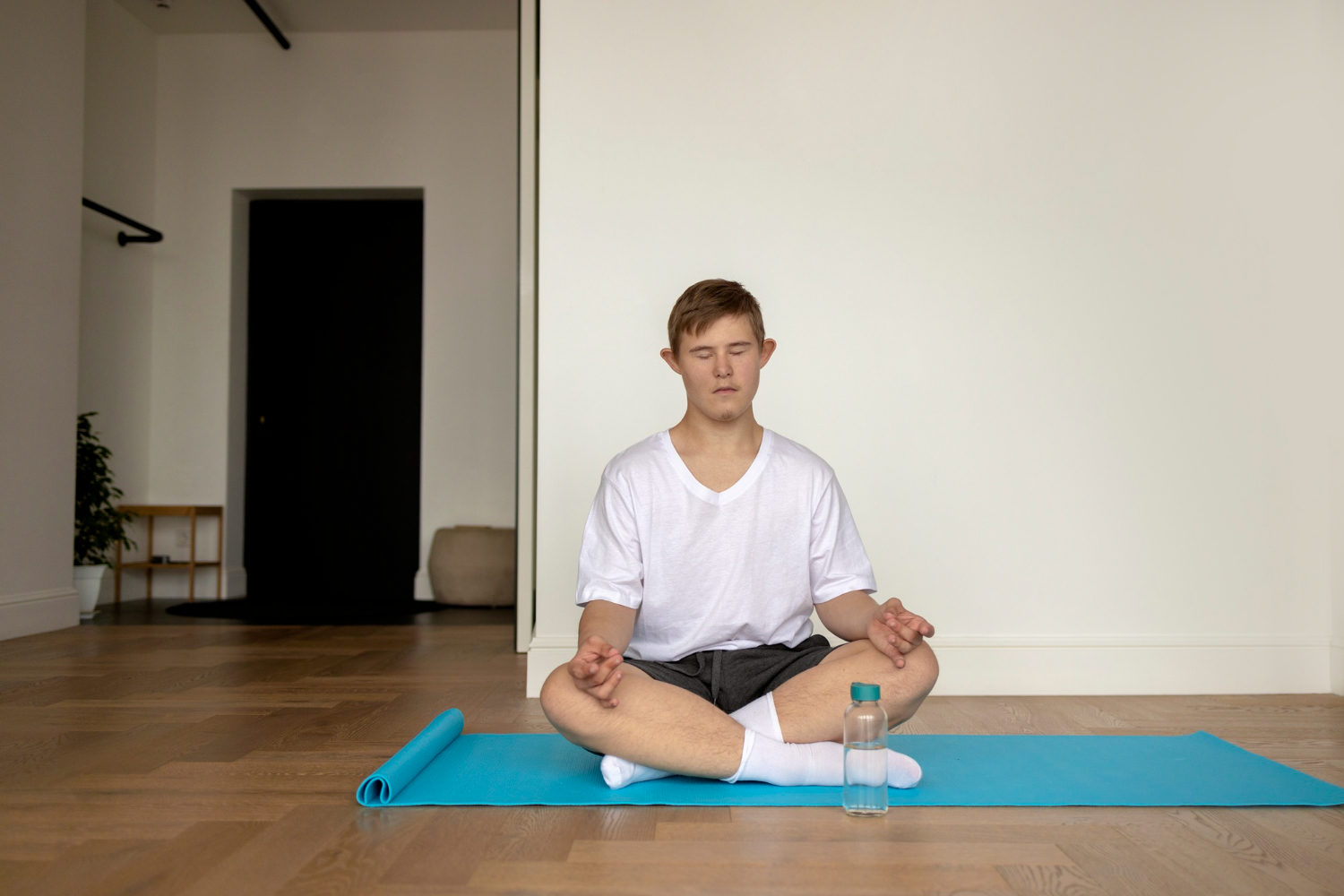
Duration: 20 minutes
Benefits: Reduces anxiety, improves flexibility
- Practice tree pose for 5 minutes.
- Perform child’s pose for 5 minutes.
- Rest 1 minute, repeat sequence.
Yoga eases stress, per Dr. Suzuki’s research. Yoga mats from our Products page ensure comfort during stress-reducing workouts.
“Yoga calms the mind.”
Dr. Wendy Suzuki, PhD
Source: Inspired by APA, Dr. Wendy Suzuki.
Exercise 2: Brisk Walking

Duration: 20 minutes
Benefits: Boosts mood, enhances circulation
- Walk at a steady pace in a park.
- Maintain light conversation pace, 20 minutes.
- Rest briefly if needed.
Walking reduces stress, per Dr. Vickers’ study. Supportive shoes from Target support safe mental health exercises.
“Walking uplifts spirits.”
Dr. Kristin Vickers, PhD
Source: Adapted from Mayo Clinic, Dr. Kristin Vickers.
Exercise 3: Tai Chi
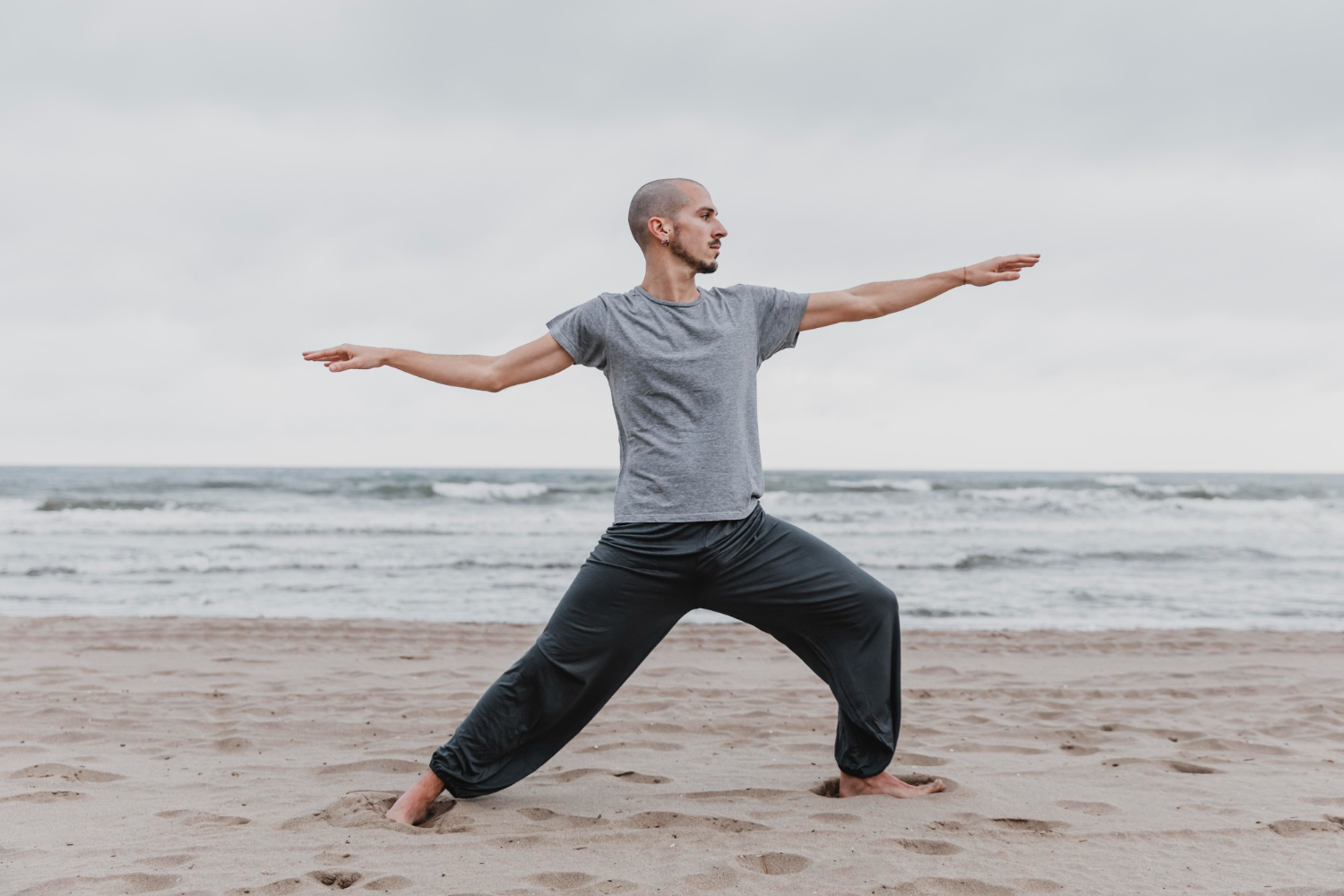
Duration: 15 minutes
Benefits: Promotes relaxation, improves balance
- Perform wave hands like clouds for 5 minutes.
- Practice standing meditation for 5 minutes.
- Rest 1 minute, repeat.
Tai Chi calms the mind, per Dr. Suzuki. Non-slip mats from Amazon aid relaxation workouts.
“Tai Chi fosters peace.”
Dr. Wendy Suzuki, PhD
Source: Based on CDC, Dr. Wendy Suzuki.
Exercise 4: Deep Breathing
Duration: 10 minutes
Benefits: Lowers heart rate, reduces tension
- Inhale deeply for 4 seconds, exhale for 6.
- Repeat for 5 minutes, seated comfortably.
- Rest 1 minute, repeat.
Deep breathing soothes stress, per Dr. Vickers. A cushion from Walmart enhances comfort during stress relief exercises.
“Breathing restores calm.”
Dr. Kristin Vickers, PhD
Source: Inspired by Mayo Clinic, Dr. Kristin Vickers.
Exercise 5: Swimming
Duration: 20 minutes
Benefits: Relaxes muscles, boosts mood
- Swim gentle laps for 10 minutes.
- Float or tread water for 5 minutes.
- Rest 1 minute, repeat.
Swimming reduces anxiety, per Dr. Suzuki. Swimsuits from our Products page support comfortable relaxation workouts.
“Swimming eases tension.”
Dr. Wendy Suzuki, PhD
Source: Based on AHA, Dr. Wendy Suzuki.
Exercise 6: Cycling
Duration: 20 minutes
Benefits: Enhances mood, improves stamina
- Cycle on a stationary bike at moderate pace.
- Pedal for 10 minutes, rest briefly.
- Repeat sequence.
Cycling eases stress, per Dr. Vickers. Stationary bikes from Amazon support stress-reducing workouts.
“Cycling lifts spirits.”
Dr. Kristin Vickers, PhD
Source: Adapted from Mayo Clinic, Dr. Kristin Vickers.
Exercise 7: Pilates
Duration: 20 minutes
Benefits: Improves focus, reduces tension
- Perform pelvic tilts for 5 minutes.
- Practice leg circles for 5 minutes.
- Rest 1 minute, repeat.
Pilates calms the mind, per Dr. Suzuki. Mats from Target aid mental health exercises.
“Pilates fosters focus.”
Dr. Wendy Suzuki, PhD
Source: Inspired by APA, Dr. Wendy Suzuki.
Exercise 8: Stretching
Duration: 15 minutes
Benefits: Relieves muscle tension, promotes calm
- Stretch hamstrings for 5 minutes.
- Perform shoulder rolls for 5 minutes.
- Rest 1 minute, repeat.
Stretching reduces stress, per Dr. Vickers. Resistance bands from Walmart enhance flexibility in stress relief exercises.
“Stretching soothes tension.”
Dr. Kristin Vickers, PhD
Source: Based on Mayo Clinic, Dr. Kristin Vickers.
Exercise 9: Dance
Duration: 20 minutes
Benefits: Boosts mood, enhances coordination
- Dance to music for 10 minutes.
- Practice simple steps for 5 minutes.
- Rest 1 minute, repeat.
Dance uplifts spirits, per Dr. Suzuki. Comfortable shoes from Amazon support relaxation workouts.
“Dance sparks joy.”
Dr. Wendy Suzuki, PhD
Source: Inspired by APA, Dr. Wendy Suzuki.
Exercise 10: Guided Meditation
Duration: 10 minutes
Benefits: Lowers anxiety, promotes mindfulness
- Follow a guided meditation app for 5 minutes.
- Focus on breath for 5 minutes.
- Rest quietly.
Meditation soothes stress, per Dr. Vickers. Apps like Calm complement mental health exercises.
“Meditation restores peace.”
Dr. Kristin Vickers, PhD
Source: Based on Mayo Clinic, Dr. Kristin Vickers.
Tips for Stress Relief Success
Consistency is key for stress relief exercises. Dr. Suzuki recommends 3–5 weekly sessions. Join X stress relief groups for motivation, per APA guidelines.
Track progress with apps like Fitbit, available on our Products page. For complementary fitness ideas, see our Effective Home Workouts for Weight Loss.
“Routine builds calm.”
Dr. Wendy Suzuki, PhD
Morning sessions align with energy peaks, per ACSM. Journals or apps enhance accountability for U.S. adults.
Challenges for Beginners
Starting stress-reducing workouts can be daunting for U.S. adults. Dr. Vickers’ 2024 research notes time constraints affect 65% of Americans. Short 10-minute sessions, per APA, fit busy schedules like those of caregivers or professionals.
“Small steps lead to calm.”
Dr. Kristin Vickers, PhD
Lack of motivation is common; group classes, per CDC, boost adherence by 30%. Confidence fades as beginners fear failure, but Dr. Suzuki suggests starting with simple moves like deep breathing. Fatigue can deter some; low-impact anxiety-reducing exercises like yoga minimize exhaustion. Tracking progress with apps builds momentum, per APA.
Environmental barriers, like noisy spaces, disrupt focus. Creating a quiet workout area, per Dr. Wright, enhances success for U.S. stress relief.
Exercise Modifications
Adapt stress relief exercises for accessibility. Dr. Suzuki suggests seated yoga for limited mobility. Slow-paced walking reduces strain, per ACSM. Chair-based Tai Chi suits seniors, per Dr. Vickers.
“Modifications empower all.”
Dr. Wendy Suzuki, PhD
- Support: Chairs for seated yoga or meditation.
- Ease: Slow-paced walking routes.
- Props: Cushions for breathing exercises.
These tweaks ensure mental health exercises are inclusive for U.S. seniors and beginners.
Community Programs for Stress Relief
Community programs boost U.S. stress relief. A 2025 AHA report by Dr. Penny Kris-Etherton, PhD, RD, Professor of Nutrition at Penn State and author of Nutrition and Cardiovascular Health, notes 55% of U.S. seniors join stress-relief classes. SilverSneakers, endorsed by CDC, offers yoga and meditation sessions at community centers.
“Community fosters calm.”
Dr. Penny Kris-Etherton, PhD, RD
YMCA classes, per ACSM, include Tai Chi and swimming, promoting social bonds. Local libraries host free meditation workshops, per APA. These programs, accessible in urban and rural U.S. areas, support relaxation workouts. Contact local centers for schedules, as advised by Dr. Wright.
- YMCA: Yoga and Tai Chi classes.
- SilverSneakers: Meditation and low-impact sessions.
- Local Pools: Stress-relief swimming programs.
Source: Inspired by AHA, Dr. Penny Kris-Etherton.
Technology and Apps for Stress Relief Workouts
Technology enhances stress relief exercises for U.S. adults. A 2025 APA survey, co-authored by Dr. Vaile Wright, PhD, shows 50% of Americans use fitness apps for stress management. Apps like Calm, endorsed by Mayo Clinic, offer guided meditation and breathing exercises tailored for beginners.
“Tech simplifies stress relief.”
Dr. Vaile Wright, PhD
Wearables like Fitbit Versa, available on our Products page, track heart rate and activity, per CDC recommendations. Dr. Suzuki’s 2024 study found wearables increase workout adherence by 25%. Apps like Headspace provide yoga routines, while MyFitnessPal tracks nutrition to complement mental health exercises.
- Calm: Guided meditation and breathing.
- Fitbit: Monitors stress-related metrics.
- Headspace: Yoga and mindfulness sessions.
Start with free app trials to build confidence, per Dr. Vickers’ advice. These tools align with 2025 U.S. trends in digital wellness, supporting anxiety-reducing exercises.
Source: Based on APA, Dr. Vaile Wright.
Shopping for Equipment
Quality gear supports stress relief exercises. Dr. Vickers recommends non-slip shoes for safe low-stress fitness. Yoga mats from Amazon ensure stability; swimsuits from Kohl’s suit swimming.
“Gear ensures safe workouts.”
Dr. Kristin Vickers, PhD
Meditation cushions and resistance bands from our Products page enhance relaxation workouts. Breathable clothing from Nike, per ACSM, boosts comfort.
Creating a Stress-Free Workout Space
A calm space enhances mental health exercises. Dr. Suzuki suggests clear areas for safe movement. Store gear in bins, per USDA safety guidelines, to maintain organization.
“Safe spaces boost calm.”
Dr. Wendy Suzuki, PhD
Well-lit spaces with lamps from Target improve mood. Calming decor like plants or soft colors, per Dr. Wright, supports U.S. stress relief during workouts.
Stress Relief in U.S. Lifestyles
Stress relief exercises are a growing U.S. trend. APA’s 2025 survey shows 70% of adults prioritize mental health, with 40% adopting home-based workouts. Dr. Vickers notes X stress relief groups boost engagement in relaxation workouts.
“Stress relief shapes wellness.”
Dr. Kristin Vickers, PhD
Google Trends 2025 shows stress relief searches peak in January, reflecting U.S. focus on mental health. Apps like Calm and community programs like YMCA classes drive U.S. stress relief. Urban areas like New York and rural regions alike embrace these practices, per CDC data.
Debunking Stress Relief Myths
Myths deter U.S. adults from stress relief exercises. Dr. Suzuki clarifies exercise doesn’t require intensity; gentle moves like stretching are effective, per Dr. Vickers. Short 10-minute sessions suffice, per CDC.
“Simple exercises work.”
Dr. Wendy Suzuki, PhD
Injury risks are minimal with proper pacing, per AHA. Anxiety-reducing exercises are safe for all ages, debunking myths about complexity.
Frequently Asked Questions
Are stress relief exercises safe?
Yes, low-impact moves are safe, per Dr. Suzuki.
Do I need equipment?
No, bodyweight exercises like breathing work, per Dr. Vickers.
How often should I exercise?
3–5 times weekly, per APA.
Trusted Resources
- American Psychological Association, Dr. Vaile Wright.
- Centers for Disease Control and Prevention.
- Mayo Clinic, Dr. Kristin Vickers.
- American Heart Association, Dr. Penny Kris-Etherton.

